
Sleeping Bear Dunes: Michigan's Natural Wonderland
Discover the majestic beauty of Sleeping Bear Dunes National Lakeshore in Michigan, where towering sand dunes, scenic trails, and rich history await nature enthusiasts.
Nestled along the eastern shoreline of Lake Michigan, Sleeping Bear Dunes National Lakeshore offers visitors a breathtaking escape into nature. This stunning destination is renowned for its towering sand dunes, some of which rise over 450 feet above Lake Michigan, providing panoramic views that are nothing short of spectacular. The park spans over 35 miles of pristine coastline, interspersed with lush forests, clear inland lakes, and charming historic farmsteads. The history of Sleeping Bear Dunes is steeped in legend, with the most famous being the Native American tale of a mother bear and her cubs, which explains the formation of the dunes and the nearby Manitou Islands. Visitors can explore this rich cultural heritage at the park's visitor center, where exhibits and programs offer insights into both the natural and human history of the area. Outdoor enthusiasts will find an array of activities to enjoy. Hiking trails of varying difficulty wind through the dunes and forests, while scenic drives provide easy access to some of the park's most beautiful vistas. The Crystal River and Platte River offer fantastic kayaking and canoeing opportunities, and the numerous beaches are perfect for swimming, picnicking, and sunbathing. In the winter, the park transforms into a haven for cross-country skiing and snowshoeing, making it a year-round destination for nature lovers.
Local tips in Sleeping Bear Dunes National Lakeshore
- Visit the Dune Climb early in the morning or late in the afternoon to avoid the crowds and heat.
- Bring insect repellent, especially during the summer months when mosquitoes and ticks are more prevalent.
- Check out the Pierce Stocking Scenic Drive for some of the park's best viewpoints and photo opportunities.
- Wear sturdy footwear for hiking as the sand can get quite hot and the terrain is uneven.
- Take a ferry to the Manitou Islands for a more secluded and adventurous experience.
Sleeping Bear Dunes: Michigan's Natural Wonderland
Nestled along the eastern shoreline of Lake Michigan, Sleeping Bear Dunes National Lakeshore offers visitors a breathtaking escape into nature. This stunning destination is renowned for its towering sand dunes, some of which rise over 450 feet above Lake Michigan, providing panoramic views that are nothing short of spectacular. The park spans over 35 miles of pristine coastline, interspersed with lush forests, clear inland lakes, and charming historic farmsteads. The history of Sleeping Bear Dunes is steeped in legend, with the most famous being the Native American tale of a mother bear and her cubs, which explains the formation of the dunes and the nearby Manitou Islands. Visitors can explore this rich cultural heritage at the park's visitor center, where exhibits and programs offer insights into both the natural and human history of the area. Outdoor enthusiasts will find an array of activities to enjoy. Hiking trails of varying difficulty wind through the dunes and forests, while scenic drives provide easy access to some of the park's most beautiful vistas. The Crystal River and Platte River offer fantastic kayaking and canoeing opportunities, and the numerous beaches are perfect for swimming, picnicking, and sunbathing. In the winter, the park transforms into a haven for cross-country skiing and snowshoeing, making it a year-round destination for nature lovers.
When is the best time to go to Sleeping Bear Dunes National Lakeshore?
Iconic landmarks you can’t miss
Sleeping Bear Dunes Overlook
Experience unparalleled natural beauty at Sleeping Bear Dunes Overlook, where towering sand dunes meet the sparkling waters of Lake Michigan.
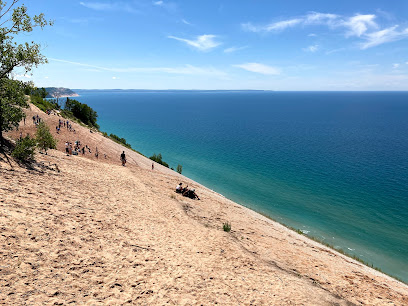
Mission Point Lighthouse
Explore the historic Mission Point Lighthouse in Traverse City, MI, where maritime history meets stunning views of Lake Michigan's shores.

Historic Fishtown
Discover the enchanting Historic Fishtown, a picturesque fishing village in Michigan, rich in history and natural beauty, perfect for all travelers.

Point Betsie Lighthouse
Explore the historic Point Betsie Lighthouse, offering stunning views of Lake Michigan and rich maritime heritage in a serene coastal setting.

Grand Traverse Lighthouse
Discover the Grand Traverse Lighthouse, a historic maritime landmark in Northport, Michigan, offering stunning views and rich nautical heritage.

Empire Bluff Trail
Explore the stunning Empire Bluff Trail in Sleeping Bear Dunes National Lakeshore, where breathtaking views and natural beauty await every hiker.

Philip A. Hart Visitor Center
Explore Sleeping Bear Dunes National Lakeshore from the Philip A. Hart Visitor Center, where nature, education, and adventure come together.

Arcadia Dunes: The C.S. Mott Nature Preserve
Explore the breathtaking landscapes of Arcadia Dunes: The C.S. Mott Nature Preserve, a hidden gem on Lake Michigan's coastline, perfect for nature lovers and outdoor enthusiasts.
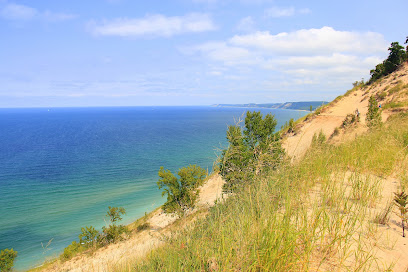
Pyramid Point Overlook
Discover the stunning vistas of Pyramid Point Overlook in Sleeping Bear Dunes National Lakeshore, a must-see for nature lovers and hiking enthusiasts.

Robert H. Manning Memorial Lighthouse
Explore the iconic Robert H. Manning Memorial Lighthouse for breathtaking views and a glimpse into Michigan's rich maritime history.

Sleeping Bear Point Coast Guard Station Maritime Museum
Discover the rich maritime history of the Great Lakes at Sleeping Bear Point Coast Guard Station Maritime Museum amidst stunning natural beauty.

Point Betsie Lighthouse Beach
Experience the tranquil beauty of Point Betsie Lighthouse Beach in Frankfort, Michigan, a perfect blend of nature, history, and relaxation.

Michigan Legacy Art Park
Explore Michigan Legacy Art Park: A scenic fusion of art, nature, and culture with stunning sculptures and hiking trails in Thompsonville.

Hippie Tree
Explore the Hippie Tree in Traverse City, a vibrant landmark where creativity and community come together under its sprawling branches.

Sleeping Bear Dunes National Lakeshore Ranger Station
Explore the breathtaking beauty of Sleeping Bear Dunes National Lakeshore, a natural wonder with stunning views, rich history, and endless outdoor adventures.

Unmissable attractions to see
Dune Climb
Discover the breathtaking Dune Climb in Glen Arbor, MI, where adventure meets stunning natural beauty and unforgettable views await.

Sleeping Bear Dunes Overlook
Explore the stunning beauty of Sleeping Bear Dunes Overlook, a breathtaking natural wonder along Lake Michigan with towering dunes and serene landscapes.

Mission Point Lighthouse
Explore the iconic Mission Point Lighthouse, a beautiful blend of history and nature on the shores of Lake Michigan.

Historic Fishtown
Discover the historic charm of Fishtown in Leland, Michigan, where maritime heritage meets vibrant local culture and stunning natural beauty.
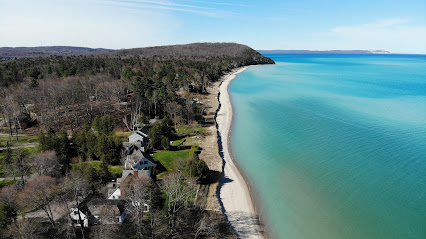
Clinch Park
Discover the beauty of Clinch Park in Traverse City, a perfect blend of beach relaxation and family-friendly activities amidst stunning lakeside views.
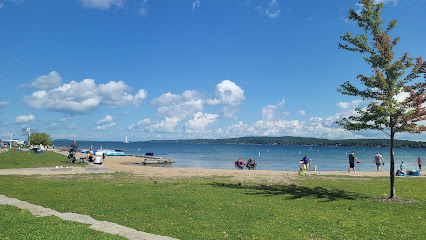
Point Betsie Lighthouse
Discover the charm and history of Point Betsie Lighthouse, a stunning lakeside attraction and museum offering breathtaking views and local crafts.

Frankfort Public Beach And Playground
Experience the serene beauty of Frankfort Public Beach and Playground, where sandy shores meet stunning Lake Michigan views and family-friendly fun awaits.

Grand Traverse Lighthouse
Discover the Grand Traverse Lighthouse, a historic gem on Lake Michigan offering breathtaking views and rich maritime history in Northport, Michigan.

Empire Bluff Trail
Experience the breathtaking views and serene beauty of Empire Bluff Trail, a top hiking destination in Michigan's Sleeping Bear Dunes National Lakeshore.

Philip A. Hart Visitor Center
Explore the breathtaking Sleeping Bear Dunes at the Philip A. Hart Visitor Center, your essential guide to Michigan's stunning natural beauty.

Philip A. Hart Visitor Center
Explore the breathtaking Sleeping Bear Dunes at the Philip A. Hart Visitor Center – your gateway to adventure and natural beauty in Michigan.
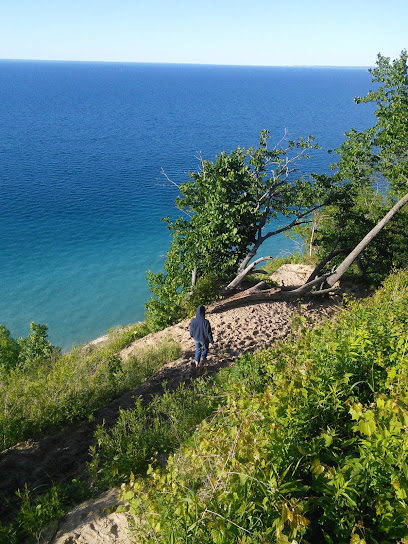
Pyramid Point Overlook
Discover the stunning views of Lake Michigan at Pyramid Point Overlook, a scenic hiking area in Michigan's breathtaking wilderness.

Pyramid Point Overlook
Explore the stunning Pyramid Point Overlook in Michigan for breathtaking views and invigorating hikes in a picturesque natural setting.

Robert H. Manning Memorial Lighthouse
Discover the serenity and beauty of Robert H. Manning Memorial Lighthouse, a historic landmark on the shores of Lake Michigan, perfect for maritime enthusiasts.

Shady Lane Cellars
Experience the enchanting Shady Lane Cellars, a premier winery in Suttons Bay, Michigan, where stunning views meet exquisite wines and welcoming hospitality.

Essential places to dine
Boone's Long Lake Inn
Discover Boone's Long Lake Inn: A Culinary Gem in Traverse City Offering Exquisite Steaks and Fresh Seafood with Scenic Lakeside Views.

Joe's Friendly Tavern
Experience the best of grill cuisine at Joe's Friendly Tavern in Empire – where hearty meals meet friendly service in a cozy atmosphere.

Trattoria Stella
Experience authentic Italian cuisine at Trattoria Stella in Traverse City - where every meal is a celebration of flavor and tradition.

Oaky's Tavern
Discover the heart of American cuisine at Oaky's Tavern in Grawn, MI—home of delicious burgers, wings, and an unforgettable dining experience.

The Cove
Discover The Cove in Leland, MI - where exceptional American cuisine meets breathtaking views of Lake Michigan.

The Cherry Hut
Experience the taste of Michigan at The Cherry Hut – where delicious pies meet warm hospitality in Beulah.

Dinghy's Restaurant & Bar
Experience mouthwatering American cuisine and refreshing drinks at Dinghy's Restaurant & Bar in picturesque Frankfort, Michigan.

Bayview Inn Bar & Grill
Experience delicious cuisine and vibrant atmosphere at Bayview Inn Bar & Grill - where great food meets sports excitement in Williamsburg.

Hofbrau Steak House & American Grille
Experience exceptional steak and classic American dishes at Hofbrau Steak House & American Grille in beautiful Interlochen, MI.

Grille 44
Discover the flavors of Bear Lake at Grille 44 – your go-to grill restaurant for delicious meals and warm hospitality.

Dilbert's
Experience delightful breakfasts at Dilbert's in Interlochen, Michigan - where every meal starts your day off right!

Platte River Inn
Experience the heartwarming flavors of American cuisine at Platte River Inn – your cozy culinary retreat in Honor, Michigan.

Empire Village Inn
Discover delicious grill cuisine at Empire Village Inn in scenic Michigan - your perfect dining destination after exploring Sleeping Bear Dunes.

Lakeside Café
Experience delicious American cuisine with breathtaking lakeside views at Lakeside Café in Bear Lake.

Good Harbor Grill
Experience delectable American cuisine at Good Harbor Grill in Glen Arbor, MI - perfect for post-adventure dining with scenic views.

Markets, malls and hidden boutiques
Anderson's Glen Arbor Market
Discover Anderson's Glen Arbor Market, your go-to grocery store for fresh produce, local beers, gourmet deli items, and delicious pizza takeout in Glen Arbor, MI.

Cherry Republic | Glen Arbor
Discover the best of Michigan’s cherry delights at Cherry Republic in Glen Arbor, where gourmet treats and local beverages await.

Grocer's Daughter Chocolate Shop
Discover the taste of artisanal chocolates at Grocer's Daughter Chocolate Shop in Empire, Michigan, where every bite is a celebration of quality and flavor.

Bayside Gallery
Discover Bayside Gallery in Suttons Bay - a vibrant gift shop and art gallery showcasing local talent and unique home goods.

My Secret Stash
Explore My Secret Stash in Traverse City - Your destination for unique gifts, local art, and vibrant plants that capture the essence of Michigan.

Cottage Book Shop
Explore a treasure trove of literature at the Cottage Book Shop, a cozy bookstore in Glen Arbor, Michigan, perfect for book lovers and casual readers alike.

Poppy Things
Discover unique women's clothing and local artistry at Poppy Things, a boutique in Suttons Bay offering a delightful shopping experience.

The Bear Den Gallery
Explore The Bear Den Gallery for unique gifts and local art in the heart of Suttons Bay, Michigan.

Nature Walk Studio
Experience the charm of Empire, Michigan with unique gifts and local art at Nature Walk Studio, the perfect spot for memorable souvenirs.

Front Porch Gift Shop
Explore the artistry of Michigan at Front Porch Gift Shop, where unique handcrafted gifts and local treasures await in Suttons Bay.

Momentum Apparel / CSEA Inc.
Discover Glen Arbor's unique style at Momentum Apparel—your go-to boutique for fashion and local flair.

Pennington Collection
Discover the Pennington Collection in Northport, Michigan - a charming gift shop brimming with unique treasures and local artistry for every taste.

Coastal Clothing And Accessories
Discover the essence of coastal fashion at Coastal Clothing And Accessories, Glen Arbor's premier destination for stylish apparel and unique accessories.

Sleeping Bear Gallery
Explore the Sleeping Bear Gallery in Empire, Michigan, where local artistry meets the stunning landscape of the Sleeping Bear Dunes.

Empire Outdoors
Discover outdoor essentials and unique gifts at Empire Outdoors, your go-to store near Sleeping Bear Dunes for all adventure seekers.

Essential bars & hidden hideouts
Sleeping Bear Dunes National Lakeshore
Experience the awe-inspiring beauty of Sleeping Bear Dunes National Lakeshore, where towering sand dunes meet the serene waters of Lake Michigan.

Joe's Friendly Tavern
Discover the delightful flavors and inviting atmosphere of Joe's Friendly Tavern, a must-visit grill and restaurant in beautiful Empire, Michigan.
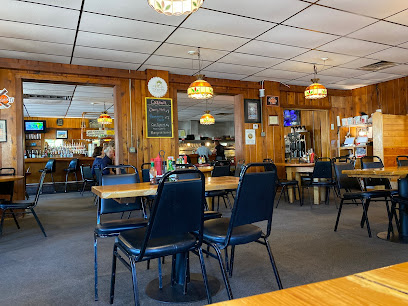
Cherry Public House | Glen Arbor
Experience the best of local cuisine and craft brews at Cherry Public House, a must-visit restaurant and brewery in Glen Arbor, Michigan.

North Bar Lake
Explore North Bar Lake in Empire, MI - a serene swimming lake surrounded by stunning dunes and natural beauty, perfect for relaxation and adventure.

Local Phrases about Sleeping Bear Dunes National Lakeshore
-
- HelloAhnii
[Ah-nee] - GoodbyeMiigwech
[Mee-gwetch] - YesEya
[Ay-ya] - NoAaniin
[Ah-nee] - Please/You're welcomeBozhoo
[Bo-joo] - Thank youMiigwech
[Mee-gwetch] - Excuse me/SorryMiigwech
[Mee-gwetch] - How are you?Boozhoo
[Bo-joo] - Fine. And you?Boozhoo. Aaniin?
[Bo-joo. Ah-nee?] - Do you speak English?Anishinaabemowin endizhinikaaz?
[Ah-ni-she-naa-be-mo-win en-dee-jee-ni-kaz?] - I don't understandAaniin ezhi-ayaad
[Ah-nee ah-zhi-ah-yad]
- HelloAhnii
-
- I'd like to see the menu, pleaseMenu nindaanis
[Meh-noo nin-dah-nees] - I don't eat meatNiizh
[Neezh] - Cheers!Baamaapii
[Bah-mah-pee] - I would like to pay, pleaseNibaaj
[Nee-baaj]
- I'd like to see the menu, pleaseMenu nindaanis
-
- Help!Asemaa
[Ah-seh-mah] - Go away!Waaban
[Wah-bahn] - Call the Police!Ozhibii'an
[Oh-zhee-bee-an] - Call a doctor!Mashkiki
[Mah-shkee-kee] - I'm lostNiin giinawaa
[Neen gee-nwaa] - I'm illNiish
[Neesh]
- Help!Asemaa
-
- I'd like to buy...Gaa gidin
[Gah gee-deen] - I'm just lookingNindaanis
[Nin-dah-nees] - How much is it?Giinwaa
[Gee-nwaa] - That's too expensiveMaajii
[Mah-jee] - Can you lower the price?Giinwaa wii madwaa
[Gee-nwaa wee mah-dwaa]
- I'd like to buy...Gaa gidin
-
- What time is it?Giinwaa ji-ayaamagad?
[Gee-nwaa jee-ah-yaa-mah-gahd] - It's one o'clockBekaadizi
[Beh-kah-dee-zee] - Half past (10)Midaaswi
[Mee-dah-swee] - MorningWaaban
[Wah-bahn] - AfternoonNibi
[Nee-bee] - EveningBakade
[Bah-kah-day] - YesterdayNiiwin
[Nee-win] - TodayBiindaakonigewin
[Bee-nah-dah-koh-ni-geh-win] - TomorrowBiindigay
[Been-dee-gay] - 1Beka
[Beh-kah] - 2Ningodwaaswi
[Neen-goh-dwah-swee] - 3Niswi
[Nee-swee] - 4Niiwin
[Nee-win] - 5Naanan
[Nah-nan] - 6Niizh
[Neezh] - 7Niwii
[Nee-wee] - 8Ningodwaaswi
[Neen-goh-dwah-swee] - 9Zhaangaswi
[Zhaan-gah-swee] - 10Midaaswi
[Mee-dah-swee]
- What time is it?Giinwaa ji-ayaamagad?
-
- Where's a/the...?Ningaani
[Neen-gah-nee] - What's the address?Waaseyaa
[Wah-seh-yah] - Can you show me (on the map)?Nibwaakaawin
[Nee-bwah-kah-win] - When's the next (bus)?Giinwaa nanaandagwaa?
[Gee-nwaa nah-nahn-dah-gwaa] - A ticket (to ....)Niginaa
[Nee-gee-nah]
- Where's a/the...?Ningaani
History of Sleeping Bear Dunes National Lakeshore
-
The area now known as Sleeping Bear Dunes National Lakeshore has been inhabited by Native American tribes for centuries. The Anishinaabek people, specifically the Ottawa and Chippewa tribes, have deep cultural and spiritual connections to this land. The legend of the Sleeping Bear, which gives the dunes their name, is an Ojibwe tale about a mother bear and her two cubs who swam across Lake Michigan to escape a forest fire. The mother bear waited on the shore for her cubs, but they never arrived, and she eventually lay down and fell asleep, forming the dunes. The two cubs became the North and South Manitou Islands.
-
In the 17th and 18th centuries, European explorers, missionaries, and fur traders began to arrive in the area. French explorers like Jean Nicolet and Étienne Brûlé were among the first Europeans to traverse this region. By the 19th century, European settlers had established logging and agricultural communities, attracted by the abundant natural resources. The logging industry, in particular, played a significant role in shaping the landscape and economy of the region.
-
The waters surrounding Sleeping Bear Dunes have a rich maritime history, marked by the many shipwrecks that lie beneath the surface of Lake Michigan. The Manitou Passage, located between the mainland and the Manitou Islands, was a critical shipping route. However, it was also treacherous, leading to numerous shipwrecks. Today, many of these shipwrecks are part of the Manitou Passage Underwater Preserve and can be explored by divers. The Sleeping Bear Point Coast Guard Station Maritime Museum provides insight into this perilous era, showcasing artifacts and stories from the shipwrecks and the lives of the coast guardsmen who patrolled these waters.
-
The campaign to establish Sleeping Bear Dunes as a protected area began in the mid-20th century. Concerned citizens and conservationists recognized the unique natural beauty and ecological significance of the dunes and surrounding landscapes. After years of advocacy, the Sleeping Bear Dunes National Lakeshore was officially established on October 21, 1970. The creation of the national lakeshore ensured the preservation of over 70,000 acres of dunes, forests, beaches, and historic sites for future generations to enjoy.
-
Since its establishment, Sleeping Bear Dunes National Lakeshore has been dedicated to preserving both its natural and cultural resources. The area is home to a diverse range of flora and fauna, including endangered species such as the piping plover. Efforts to protect and restore these habitats are ongoing. Additionally, historical structures like the South Manitou Island Lighthouse and the Glen Haven Village have been preserved and restored, offering visitors a glimpse into the region's past. Cultural events and educational programs continue to celebrate and share the rich history and heritage of the area.
Sleeping Bear Dunes National Lakeshore Essentials
-
Sleeping Bear Dunes National Lakeshore is located in the northwest region of Michigan's Lower Peninsula. The nearest major airport is Cherry Capital Airport (TVC) in Traverse City, which is approximately 30 miles away from the park. From Traverse City, you can rent a car or take a taxi to the lakeshore. Alternatively, you can drive from major cities in the region: it's about a 4-hour drive from Detroit and a 5-hour drive from Chicago.
-
The most convenient way to explore Sleeping Bear Dunes National Lakeshore is by car. There are several parking areas throughout the park. While there is no public transit within the park itself, bike rentals are available in nearby towns like Glen Arbor and Empire, which provide a scenic and eco-friendly way to explore the area. Shuttle services are occasionally available during peak tourist seasons.
-
The official currency in the United States is the US Dollar (USD). Credit and debit cards are widely accepted in most establishments, including hotels, restaurants, and shops. However, it is advisable to carry some cash for small purchases, especially in more remote areas. ATMs are available in nearby towns such as Glen Arbor and Empire.
-
Sleeping Bear Dunes National Lakeshore is generally a safe destination for tourists. However, it is always wise to take standard precautions. Be mindful of your belongings in crowded places, and avoid leaving valuables visible in your car. There are no specific high-crime areas targeting tourists, but staying vigilant and aware of your surroundings is always a good practice.
-
In case of emergency, dial 911 for immediate assistance. The nearest medical facilities are located in Traverse City, which has hospitals and urgent care centers. It is recommended to have travel insurance that covers medical emergencies. For minor health issues, there are pharmacies in nearby towns where you can purchase over-the-counter medications.
-
Fashion: Do wear comfortable and weather-appropriate clothing, especially for hiking. Avoid wearing flip-flops on trails. Religion: Do respect the natural environment and any cultural landmarks. Public Transport: Do note that there is no public transport within the park, so plan accordingly. Greetings: Do greet people with a friendly 'hello'. Eating & Drinking: Do try local foods at nearby restaurants and eateries. Don’t leave trash behind; always use designated trash bins.
-
To experience Sleeping Bear Dunes National Lakeshore like a local, visit during the shoulder seasons (spring and fall) to avoid the summer crowds. Participate in ranger-led programs for an educational experience. Don’t miss the Pierce Stocking Scenic Drive for breathtaking views. Engage with locals in Glen Arbor and Empire to learn about the area's history and best-kept secrets. Lastly, take some time to explore the quaint local shops and eateries.
Trending Landmarks in Sleeping Bear Dunes National Lakeshore
-
Sleeping Bear Dunes Overlook
-
Mission Point Lighthouse
-
Historic Fishtown
-
Point Betsie Lighthouse
-
Grand Traverse Lighthouse
-
Empire Bluff Trail
-
Philip A. Hart Visitor Center
-
Arcadia Dunes: The C.S. Mott Nature Preserve
-
Pyramid Point Overlook
-
Robert H. Manning Memorial Lighthouse
-
Sleeping Bear Point Coast Guard Station Maritime Museum
-
Point Betsie Lighthouse Beach
-
Michigan Legacy Art Park
-
Hippie Tree
-
Sleeping Bear Dunes National Lakeshore Ranger Station
Nearby Cities to Sleeping Bear Dunes National Lakeshore
-
Things To Do in Door County
-
Things To Do in Petoskey
-
Things To Do in Sturgeon Bay
-
Things To Do in Mackinac Island
-
Things To Do in Green Bay
-
Things To Do in Sheboygan
-
Things To Do in Muskegon
-
Things To Do in Appleton
-
Things To Do in Marquette
-
Things To Do in Grand Rapids
-
Things To Do in Oshkosh
-
Things To Do in Bay City
-
Things To Do in Holland
-
Things To Do in Saugatuck
-
Things To Do in Frankenmuth











